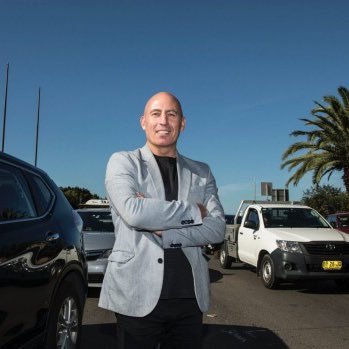
Authorities need to stop ‘planning cities from helicopters’, according to an urban design expert who has observed successful and not so successful cities around the world for 30 years.

Ludo Campbell-Reid, recently appointed director of City Design and Liveability at Melbourne’s Wyndham City Council, says planning has entered a new age.
“What’s happened over the years is that traditional planning has needed to move into a much more collaborative space with less planning a city from a helicopter, but actually working with communities and for communities,” he told Government News.
Mr Cambell-Reid, founder of London-based Urban Design and former Cities Design Champion and general manager at Auckland Council, will be holding a workshop titled Connecting Through Place: Placemaking for People at the Local Government Professionals Annual Conference in Melbourne this month.
Speaking to Government News ahead of the conference, Mr Campbell Reid said placemaking is about urban planning with a collaborative, people-centric slant.
“It’s about breaking down the local authority door and getting out of the ivory tower,” he said.
This means ensuring there’s a dialogue between local government professionals, elected officials, the private sector and the community.
“It’s about empowering the decision-makers to make the better decisions and empowering staff to provide the best advice, but the key part is to provide a vehicle for the community to actually have a proper conversation.
“It’s in that tripartite relation where the magic of cities happens.”
Cultural change driven by common challenges
Mr Campbell-Reid says modern placemaking reflects a cultural change driven by challenges that are universal to all large urban centres – population pressure, housing shortages, traffic congestion and climate change – and the recognition that traditional solutions no longer work.
“It’s in that tripartite relation where the magic of cities happens.”
The biggest mistakes in planning are a refusal to move past entrenched views, siloed thinking and a failure to put people at the centre, he says.
He points to traffic policy as an example.
“The majority of traffic departments around the world don’t count people,” Mr Campbell-Reid says.
“They don’t measure what people do, they don’t measure the number of pedestrians that walk along certain streets at certain times of the day.
“They’re designing transport systems to move vehicles, when they should actually be designing transport systems to move people.
“If you put people at the epicenter of the conversation you get a very different outcome.”
There is also a need to consider the longevity of policy decisions and how they’ll survive consecutive mayors and policy directions.
Mr Campbell-Reid says work currently underway to improve liveability in cities like Paris and New York provide good examples of best practice, and even cities like Sydney and Melbourne are making strides.
Planning for Melbourne’s urban fringe
In his new role at Wyndham Council, the nation’s third-fastest growing municipality, Mr Campbell-Reid is charged with using his experience to ensure Melbourne’s urban fringes are liveable.
“It’s going to be about bringing some of the best international best practice to Wyndham and other municipalities in the west of Melbourne,” he said.
“Melbourne can’t fit too many more people in and the city needs to start to expand into other areas to be viable going forward.
“With the transport problems we have in the west we’re going to need to think about how we build almost a second city in the Werribee area and planning in the Avalon Corridor.
“We’re looking at new transport links, new fast rail, new CBD to city rail systems.
“What you’re trying to do is create more sustainable mobility plans where rather than spending time traveling to work, people have more time for life. That’s the long-term dream, to create that,” he says.
Comment below to have your say on this story.
If you have a news story or tip-off, get in touch at editorial@governmentnews.com.au.
Sign up to the Government News newsletter
When are cities going to stop growing. Only Economists believe we can grow for ever. But ‘Nature’ says we cannot there is always some sort of pushback or consequence.
I hope the transport problems are taken care of by the authorities.
Quite shocked to see the accelerating subdivision into residential lots along much of Port Philip Bay’s west side and around Geelong towards the ocean – clusters of black roof tops, no space for trees, far from train stations (and there is a good train line but it doesn’t stop much – and should remain fast) – car based, almost no roof top solar or rainwater tanks, loss of farmland and bushland, coastal lands over used, more and wider roads. This in addition to Melbourne CBD with at least 32 cranes sitting on new buildings. Growth growth growth, and all so unsustainable! where are the bikeways, footpaths, clustered developments around stations of up to 3 or 4 stories in suburban areas, prohibitions on land subdivision to protect farming and nature – planning seems to be in the last century, kilometres for children to get to school relying on buses and cars, lack of cultural centres, even aquatic centres to keep children active….
None of this is rocket science and I wish you well in your endeavours at Wyndham Ludo because it is a goal worth fighting for. Many years ago I worked for an organisation which had all the elements of good strategic planning and development built into its DNA but unfortunately politics -privatisation – vested interests got in the way and instead of successive governments since then working in the overall public interest this great city of Melbourne and its surrounds is turning into a bland sterile vanilla environment to live in( there are exceptions in some parts ) No thought has been given to the long term social implications of this